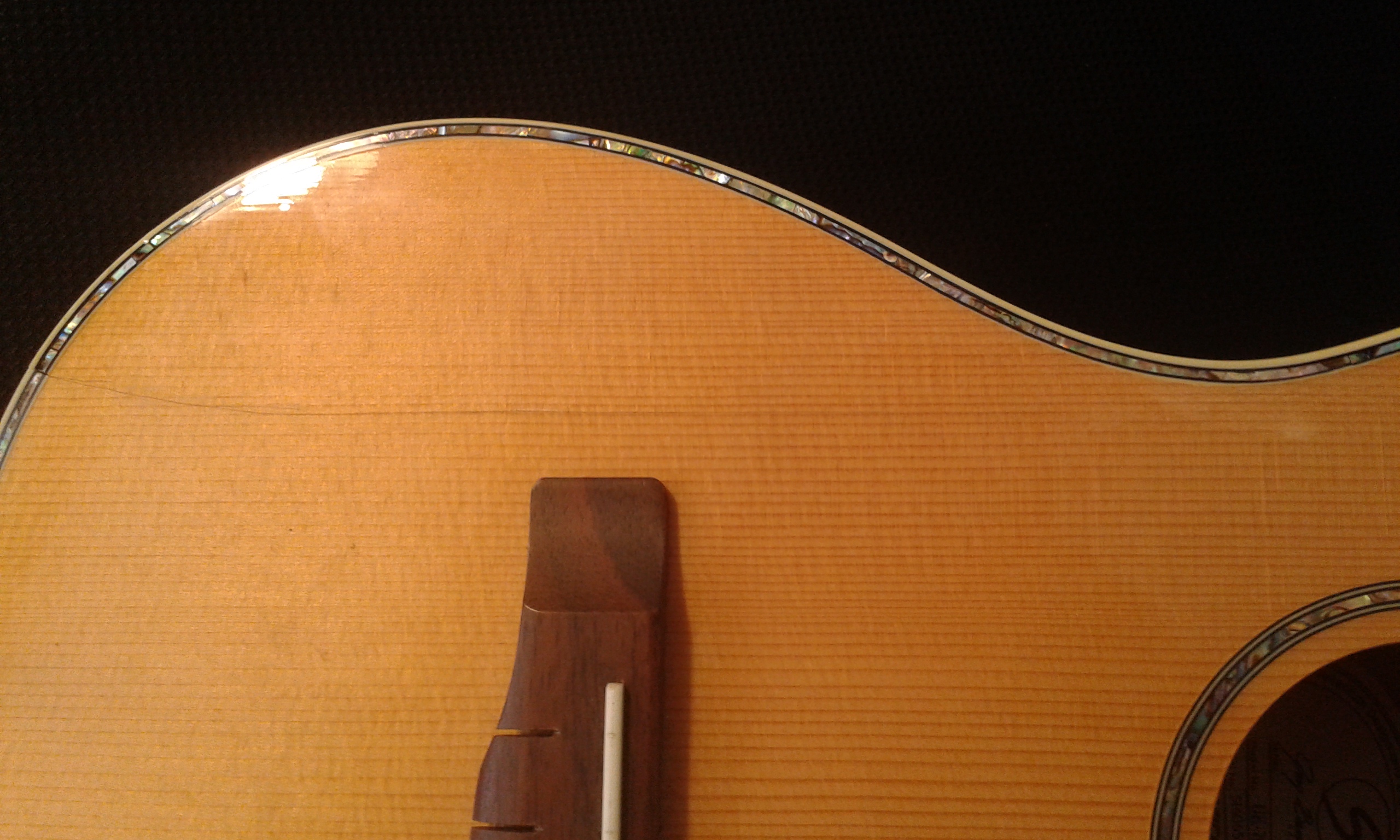Post
by seeaxe » Thu Jun 02, 2016 11:56 am
Hi Mickey
I can't speak for anyone else but I struggle to find the time to get into my workshop to work on my own projects. Hence, I can't help you and suspect that would be the reason why no one else has offered either. Sounds like you have plenty of time if not much moolah.
You are probably already aware that If you want to fix that properly, you would need to remove the neck and all the bindings, take the bridge off, take the top off, remove the pickups if they are on it if you can, bin the top and get a new one, brace and refit the new top, refit the neck, fit new binding, refinish and re-fit the bridge. Its all doable but that's a lot of work and some of the more difficult stuff to attempt as a novice.
Done by a professional, I suspect that is probably going to cost you more than the instrument cost in the first place. You probably know that too! So as I see it, your options seem to be (assuming it is playable) to carry on and play it as it is, do some form of holding repair or go and buy another one.
Assuming you don't have the readies to buy another, lets assume you have a go at fixing this yourself.
The trick with a holding repair is not to do anything that will get in the way of an eventual proper fix (although you seem to be able to buy a pretty nice Chinese uke for not much these days, in which it may never be fixed)
You have two main issues - keeping the top together and fixing the binding/making it look better.
That looks like celluloid binding so you need an appropriate celluloid solvent glue eg Weld-ON or similar - go to the glue guru in Kaimahi road in Glenfield, he can advise the best product. Glue, a bit of tape and a lot of patience should sort that out. Long rubber bands wound around the body are great for exerting a lot of pressure in a specific spot.
For the top the most common fix for a crack like that is to glue a patch across it from the inside of the uke, much the same as we glue a back strip inside the back across the main central joint. Wood grain needs to run at right angles to the top (think like plywood) The patches will ideally be small, rectangular and not very thick, maybe 2 to 3 mm. Your challenge is finding a way to get them to the right place and apply some pressure while the glue goes off as you wont be able to get your hand in there. Maybe some system of levers through the sound hole, or rare earth magnets. Again, patience will be your friend.
As you are going to bin the top eventually it doesn't matter what glue you use - it doesn't have to be removable (eg hide glue). Super glue is OK but you need to be sure you will get your patch to exactly the right place. Titebond or similar strong pva is probably best.
I'm assuming that no main braces are intersected by this crack. If there are and one has failed, I would use that uke as a paperweight and save your pennies for a new one.
Hope that helps
Cheers
Richard
Richard



